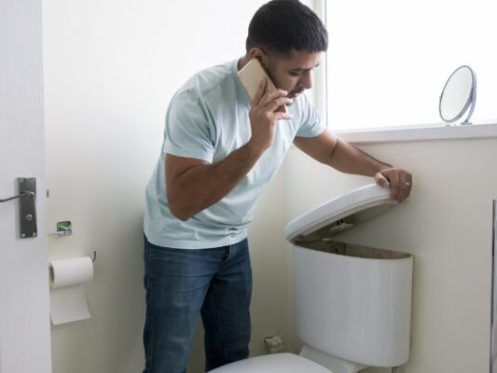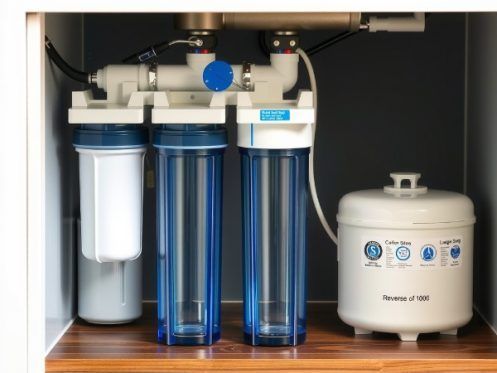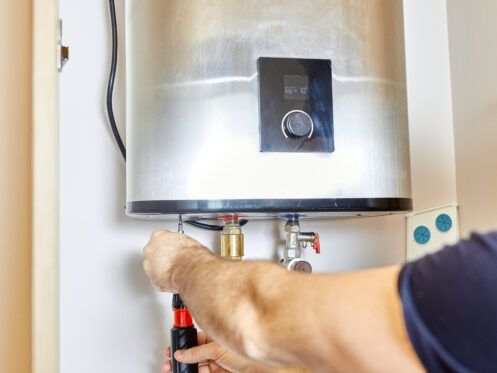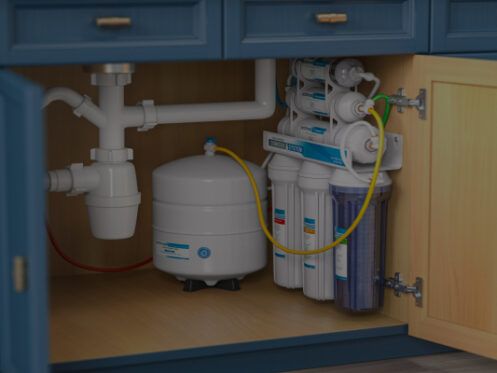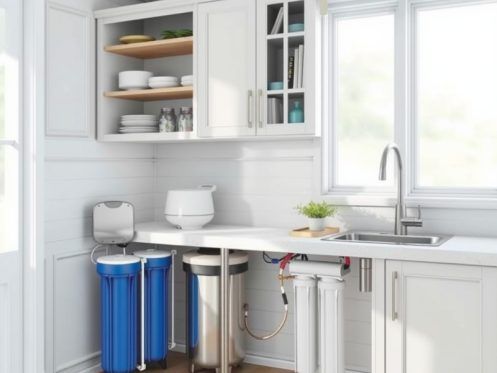
Repiping your house isn’t exactly a dream home makeover project. You’re not picking out tile or shopping for countertops. You’re dealing with the bones of your plumbing system, and the idea of tearing into walls to replace old pipes might sound like a major headache.
But here’s the thing: repiping doesn’t have to be scary. In fact, with the right team (like us at Rare Breed Plumbing), a solid plan, and a clear understanding of what to expect, a home repiping project can be surprisingly smooth—and the payoff is huge. Better water pressure. Cleaner water. Fewer leaks. And peace of mind.
So, what’s this whole repiping process really like?
Let’s walk through it—step by step.
Why You Might Need a Home Repiping Project
Most homeowners don’t wake up one morning and randomly decide to repipe their entire house. Usually, it starts with plumbing problems that just won’t go away. Maybe you’ve had frequent leaks, low water pressure, or even discolored water. These are often signs your old plumbing pipes—especially if they’re made from galvanized steel, cast iron pipes, or lead pipes—are past their prime.
Over time, pipe material breaks down. Old plumbing systems corrode, collect sediment, and eventually restrict water flow or leach rust into your drinking water. If your house was built before the 1980s and still has its original plumbing, it might be relying on outdated materials that no longer meet current local building codes. Worse yet, lead pipes can pose serious health risks, especially to kids.
Repiping a house means replacing those old pipes with modern materials like copper pipes or CPVC pipes that are built for durability, safety, and efficient water flow. It’s a complete overhaul of your home’s plumbing system—one that fixes ongoing issues and sets your home up for decades of reliable performance.
At Rare Breed Plumbing, we’ve helped Utah families make this transition with minimal disruptions. And yes—it’s a big job. But it’s absolutely worth it when you consider the long-term benefits to your home’s water quality, pressure, and value.
Step 1: The Initial Inspection
Every successful repiping project starts with a thorough inspection.
Before we even talk about replacing a single pipe, one of our repiping specialists will take a close look at your existing plumbing system. We’ll check for visible signs of damage, corrosion, and outdated materials. We’ll test your water pressure, examine water supply lines, and assess how your plumbing is laid out behind the walls and under the floors.
We’re not just looking at the obvious stuff—like rusty pipes or low water pressure—we’re also identifying potential access points, checking your home’s layout, and reviewing your water service connection.
We’ll ask questions like:
- Are you experiencing frequent leaks?
- Does your water have a rusty tint?
- Are there rooms with weak water flow?
- Do you ever get a burst of cold water in the middle of a hot shower?
This inspection helps us understand your plumbing needs and determine whether whole house repiping is the best solution, or if a partial update would do the trick.
We’ll also explain your options when it comes to pipe material, go over timelines, and answer every single question you throw at us. No surprises. No jargon. Just straight-up info you can actually use.
Step 2: Planning and Permits
Once we’ve completed the inspection and confirmed that a repiping project is the right move, we shift into planning mode.
We create a custom strategy for your home, taking into account your existing pipes, your preferred pipe material (copper pipes, CPVC pipes, or other modern materials), and how to minimize disruption to your everyday life. Our goal is to preserve as much of your home’s interior as possible, while still giving you a new piping system that’s built to last.
This is also when we’ll handle any required permits. Plumbing work like this has to meet local building codes, so it’s crucial to do things by the book. Our team knows the ins and outs of Utah’s plumbing regulations, and we’ll take care of all the paperwork so you don’t have to.
If you’re curious about how much drywall we’ll need to remove or how long the work will take, we’ll walk you through every detail during this stage. Spoiler alert: with good planning and the right tools, we can usually keep drywall dust and mess to a minimum.
Step 3: When the Repiping Work Begins
The big day has arrived, the project begins.
Now, this is where most homeowners get a little nervous. There’s a team in your house, you might hear tools behind the walls, and maybe a little drywall comes down. But don’t worry—we’ve done this more times than we can count, and we always approach every repiping project with a clean, respectful, and organized process.
Here’s what typically happens:
- Protecting your home – Before any actual repiping work begins, we take time to cover floors, furniture, and surfaces with drop cloths or plastic sheeting. We’ll keep the workspace clean and safe throughout the job.
- Access points – We’ll strategically cut small openings in your drywall to access the old plumbing pipes. These cuts are carefully placed to minimize cosmetic damage and make future repairs easy.
- Shutoff and drain – We’ll temporarily shut off the water supply to your home, usually just for a day or two. That means you may be without running water for a brief period, but we’ll give you plenty of notice and schedule things around your needs.
- Pipe replacement – We remove the existing pipes and install your new plumbing system using copper pipes, CPVC pipes, or a mix depending on what’s best for your home. These new pipes are more durable, corrosion-resistant, and built for efficient water flow.
- Testing and inspection – Once everything’s in place, we’ll pressure-test the system, inspect all the joints, and make sure every connection is watertight. If something’s not perfect, we fix it before the walls get closed up.
Repiping a house may be a major undertaking, but with the right crew, it’s a surprisingly smooth process. Most homeowners are amazed by how fast and efficient it really is.
Step 4: Clean-Up and Restoration
After the pipes are in and we’ve double-checked everything, we shift our focus to clean-up and restoration. We want your home to look as good—or better—than it did before we arrived.
We’ll patch up any drywall access points we created, and in many cases, we can texture and paint those areas so you’re not left with obvious signs of work. Our team is known for neat workspaces, thorough cleanup, and respectful service.
Yes, there may be some drywall dust, but we go out of our way to keep it contained. And if you’re ever worried about cleanup, just let us know—we’ll walk you through our post-project checklist so you can feel totally at ease.
And just like that? You’ve got a brand-new piping system tucked behind your walls and under your floors—ready to deliver cleaner water, better pressure, and far fewer headaches.
Aftercare and Final Inspection
Before we pack up, we’ll do one final walkthrough with you.
We’ll explain how your new plumbing system works, answer any lingering questions, and talk about what to expect in the first few weeks after installation. You’ll also receive documentation for your records—especially important if you ever decide to sell your home.
We recommend checking water pressure and monitoring for any leaks (rare, but worth a glance) during the first couple of days. And of course, if anything feels off or you just want to double-check something, give us a call. We stand by our work and always make sure our customers are 100% satisfied.
Is It Time to Repipe Your Home? Call Rare Breed Plumbing!
If your home’s plumbing is giving you grief, you’re tired of patching the same frequent leaks, or you just want peace of mind that your drinking water is clean and safe, it might be time for a home repiping project.
At Rare Breed Plumbing, we believe in honest advice, expert craftsmanship, and real solutions. We won’t recommend repiping unless we truly believe it’s the best solution for your plumbing needs. But when it is, we’ll guide you every step of the way—from the initial inspection to the final patch of drywall.
Whether you’ve got old plumbing pipes made of galvanized steel, low water pressure, or you’re worried about lead pipes in your system, our team is here to help.
Let’s replace those tired, rusty pipes with something better. Let’s bring your plumbing system into the modern era. Let’s get your home back to running the way it should.
Ready to chat? Give us a call today and find out what to expect when repiping, with none of the guesswork.


